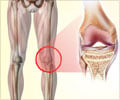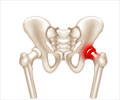Osteolectin promotes the formation of new bone from skeletal stem cells in the bone marrow, revealed a new study.

‘A new bone-forming growth factor, Osteolectin (Clec11a), might one day be a useful therapeutic option for osteoporosis and in regenerative medicine.’





A new bone-forming growth
factor, Osteolectin (Clec11a), which reverses osteoporosis in mice and has implications for regenerative medicine has been discovered by a team of scientists at the Children's Medical Center Research
Institute at UT Southwestern (CRI).Although Osteolectin is known to be made by certain bone marrow and bone cells, CRI researchers are the first to show Osteolectin promotes the formation of new bone from skeletal stem cells in the bone marrow. The study, also found that deletion of Osteolectin in mice causes accelerated bone loss during adulthood and symptoms of osteoporosis, such as reduced bone strength and delayed fracture healing.
"These results demonstrate the important role Osteolectin plays in new bone formation and maintaining adult bone mass. This study opens up the possibility of using this growth factor to treat diseases like osteoporosis," said Dr. Sean Morrison, who led the team that made the discovery. Dr. Morrison, CRI Director, holds the Mary McDermott Cook Chair in Pediatric Genetics at UT Southwestern Medical Center, and the Kathryne and Gene Bishop Distinguished Chair in Pediatric Research at Children's Research Institute at UT Southwestern.
To determine whether treatment with Osteolectin could reverse bone loss after the onset of osteoporosis, the CRI research team used mice that had their ovaries removed to model the type of osteoporosis that develops in postmenopausal women. Mice were given daily injections of PTH or recombinant Osteolectin.
The study found that both recombinant Osteolectin- and PTH-treated mice had significantly increased bone volume compared to untreated mice. Both treatments effectively reversed the bone loss that occurred after the removal of the ovaries.
Advertisement
Researchers in the Hamon Laboratory for Stem Cell and Cancer Biology, of which Dr. Morrison is the principal investigator, plan to further test Osteolectin's therapeutic potential and to identify the receptor for Osteolectin, which is key to understanding the signaling mechanisms the protein uses to promote osteogenesis.
Advertisement












